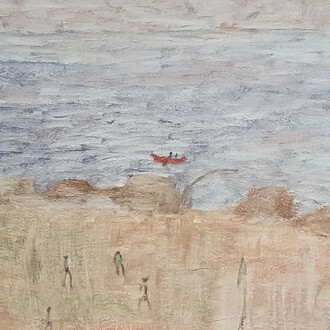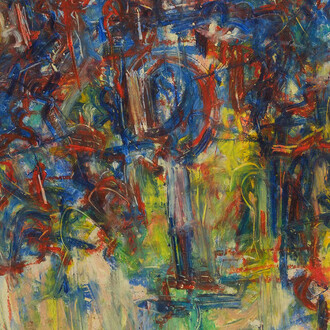Western Exhibitions is thrilled to present Folk methods with spatial problems a group show curated by Shannon Rae Stratton featuring quilts and ceramics by Henry Crissman, Chris Edwards, Lauren Gregory, Virginia Rose Torrence. Folk Methods and Spatial Problems emerges from the experiences at Ox-Bow School of Art and Artists’ Residency in Saugatuck, Michigan with four artists who co-teach in ceramics (Crissman and Torrence) and quilting (Edwards and Gregory) and continue the legacy of craft as a collaborative, communal endeavor where knowledge and skills are shared alongside the conversation and innovation that solidifies community. The show opens on Friday, June 13 with a public reception and runs through August 16. Gallery hours are Tuesday to Saturday, 11am to 6pm.
Craftsmanship is a knowledge base that has always been created and circulated through the interdependent and collaborative space of the workshop, atelier and/or studio. While this fact is universal, across history and geography, each summer, craft pedagogy persists on the summer campus at Ox-Bow.
Chris Edwards and Lauren Gregory have co-taught Soft compositions for over three years, Henry Crissman and Virginia Torrence, in addition to a teaching partnership, have established the Ceramics School, a workshop and residency in Detroit. Inevitably these close working and teaching relationships make impressions on the studio practice of collaborators, whether conceptually, formally, or materially, creating the kind of art and craft lineage that results in regional “schools” or “styles” that become more evident in historical time than in the immediate present.
In Folk methods with spatial problems, evidence of shared approaches to aesthetics and humor, the depiction/construction of volume and space and commentary on value(s) abound, resulting in a group of work that showcases the joy and irreverence that is at home in craft media. The tactics of craft— to make something that can relate to the body and function — is a place for re-orientation to the world. Or maybe more of a re-minder of the world: that it is through the intimate use of objects that we are re-embodied – which at present, feels urgent. If we are to (re)build the skills of interdependence and compassion, we need a re-embodying that takes us out of the screen and back into community.
















